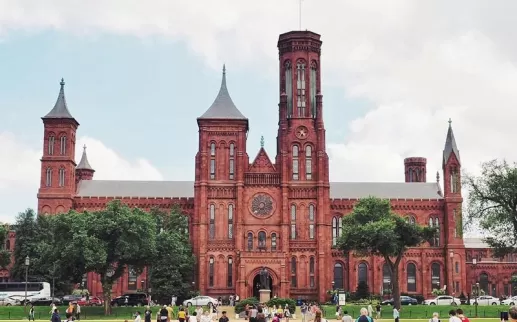President Donald Trump has reignited discussions about reopening the infamous Alcatraz prison, aiming to transform the historic site into a facility for dangerous criminals. Known colloquially as "the Rock," Alcatraz has been shuttered for decades and now acts as a popular tourist attraction within the San Francisco Bay area, drawing in over 1.4 million visitors annually. While Trump envisions this move as a restoration of law and order, critics deem the concept implausible given the prison’s dilapidated conditions and historical significance.
Constructed initially as a military fort, Alcatraz was repurposed into a federal penitentiary in 1934, becoming home to infamous figures like Al Capone and George "Machine Gun" Kelly. The prison's reputation was such that it became a setting for cinematic tales of escape, most notably depicted in the film "Escape from Alcatraz," featuring Clint Eastwood. The prison ceased operations in 1963, largely due to its exorbitant operational cost—nearly three times higher than other federal institutions—leading to its designation as a historic site managed by the National Park Service.
In recent comments, Trump expressed his desire to revive Alcatraz as a symbol of order, insisting on addressing violent crime in America. Despite his enthusiasm, experts within the correctional and historic preservation communities have labeled the notion unfeasible. Hugh Hurwitz, former acting director of the Bureau of Prisons, remarked that restoring Alcatraz would require extensive renovations, including significant structural repairs, modern security upgrades, and addressing logistical issues such as waste management and utilities.
Moreover, historical accounts reveal that Alcatraz's infrastructure remains in dire condition, with rotting structures and inadequate facilities. John Martini, a historian with ties to the site, noted that even basic necessities such as water and electricity are unfeasible under current conditions. With mounting skepticism from professionals tasked with managing and preserving such historic sites, many believe that the notion of reviving Alcatraz as a prison may remain a compelling fantasy rather than a concrete plan for implementation.
As discussions surrounding the potential reuse of Alcatraz heighten, it invokes broader considerations about prison reform and the complexities of asserting law and order against the backdrop of America’s historical narratives. While Trump's aspirations could be seen as a strategic move to resonate with his political base, the substantive hurdles involved in realizing this plan suggest that the reality of a reactivated Alcatraz may remain safely ensconced in the realm of political posturing.
Constructed initially as a military fort, Alcatraz was repurposed into a federal penitentiary in 1934, becoming home to infamous figures like Al Capone and George "Machine Gun" Kelly. The prison's reputation was such that it became a setting for cinematic tales of escape, most notably depicted in the film "Escape from Alcatraz," featuring Clint Eastwood. The prison ceased operations in 1963, largely due to its exorbitant operational cost—nearly three times higher than other federal institutions—leading to its designation as a historic site managed by the National Park Service.
In recent comments, Trump expressed his desire to revive Alcatraz as a symbol of order, insisting on addressing violent crime in America. Despite his enthusiasm, experts within the correctional and historic preservation communities have labeled the notion unfeasible. Hugh Hurwitz, former acting director of the Bureau of Prisons, remarked that restoring Alcatraz would require extensive renovations, including significant structural repairs, modern security upgrades, and addressing logistical issues such as waste management and utilities.
Moreover, historical accounts reveal that Alcatraz's infrastructure remains in dire condition, with rotting structures and inadequate facilities. John Martini, a historian with ties to the site, noted that even basic necessities such as water and electricity are unfeasible under current conditions. With mounting skepticism from professionals tasked with managing and preserving such historic sites, many believe that the notion of reviving Alcatraz as a prison may remain a compelling fantasy rather than a concrete plan for implementation.
As discussions surrounding the potential reuse of Alcatraz heighten, it invokes broader considerations about prison reform and the complexities of asserting law and order against the backdrop of America’s historical narratives. While Trump's aspirations could be seen as a strategic move to resonate with his political base, the substantive hurdles involved in realizing this plan suggest that the reality of a reactivated Alcatraz may remain safely ensconced in the realm of political posturing.



















